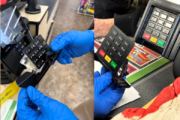WASHINGTON – It’s the time of year when everyone starts heading outside. And it is also the time of year when doctors see an uptick in poison ivy cases.
The plant itself is not seasonal. It grows year-round and poses a threat even in the dead of winter.
However, people are more likely to come into contact with poison ivy when gardening or engaging in more active outdoor activities, such as hiking.
Poison ivy is a native plant, which means it will never be totally eradicated. But WTOP Garden Editor Mike McGrath says there is a safe way to get rid of it for the season.
He says herbicides are not a good option because even after application, the plant is still allergenic to the touch. He also warns that garden gloves should never be worn when removing poison ivy because the oil in the plant that causes a rash is easily spread from one surface to another.
“It’s going to be on doorknobs, it is going to be on car handles, it is going to be on your steering wheel,” McGrath says.
Instead, he says get a big rolling trash can, a helper with a hose and a bunch of thick plastic shopping bags from the mall (McGrath says plastic bags from the supermarket are too thin).
“When you see a poison ivy vine, have your helper wet the soil around the base using the hose. Let it go for about 3 or 4 minutes until that soil is really saturated,” he says.
Once that is done, slip a plastic bag up each arm, and gently begin to pull out the roots. McGrath says when the final root comes out of the ground, pull the bags down over your arms without touching the vine and throw the bags and the vine in the trashcan.
Under no circumstance should anyone burn the vines with yard debris because the oil in the plant mixes with the smoke, McGrath advises. This mixture can be very dangerous if inhaled.
McGrath says firefighters dealing with wild fires routinely use respirators to protect their lungs, and they wear a clay-type compound to protect their bodies from any poison ivy allergens that might get on their gear.
That compound — Ivy Block — is available over-the-counter and is a good source of extra prevention for those who are extremely sensitive to poison ivy. McGrath says for most people, the best thing to do is just remember to rinse any exposed areas with cool water immediately after contact with the vine.
“The more you wash it with cool, clear water, the better the chances you have of getting the oil off your skin before the reaction can begin,” he says, noting it takes 10-30 minutes for the oil to penetrate the skin.
Washing the skin with cool water is key because it dissolves the oil.
Dr. Howard Brooks, a Georgetown-based dermatologist, says he urges his garden warrior patients to routinely take a cool shower after working outside, even if they are not sure they have been exposed to poison ivy.
However, if patients are exposed, he is ready with a plan of attack. Brooks says most garden-variety poison ivy can be treated at home first with cold compresses to reduce inflation, followed by aloe vera, calamine lotion or over-the-counter hydrocortisone.
Severe cases demand medical attention, especially when on the face.
“Any infection on the face, around the mouth, nose, if you have swollen eyes, swollen skin and blistering, you really want to go in and see a dermatologist,” Brooks says.
Follow @WTOPliving on Twitter.







